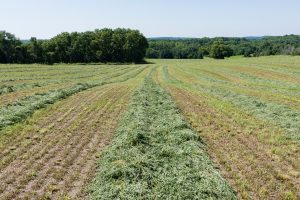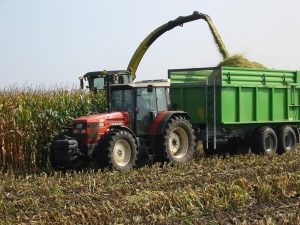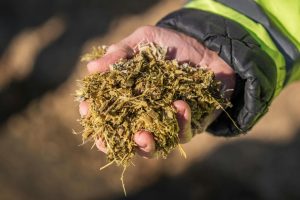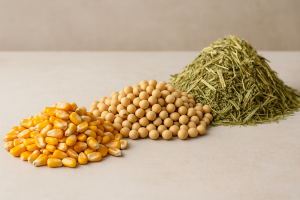Álvaro García
Corn is not a uniform crop. Over decades of hybrid development, plant breeders have emphasized different traits to suit regional growing conditions and animal feeding goals. Some hybrids are designed for grain yield, maximizing starch from the ear. Others, like leafy hybrids, emphasize leaf mass and vegetative growth. Still others, such as brown midrib (BMR) types, are bred for fiber digestibility. These anatomical shifts matter for ruminant nutrition because the major plant fractions differ in chemical composition:
- Grain (ear) contributes starch, the main source of fermentable energy.
- Leaves and stalks supply cellulose and hemicellulose, structural carbohydrates that are more slowly digested.
- Lignin, concentrated in the stalk, resists digestion altogether and can limit forage quality.
The balance of starch, fiber, and lignin dictates their nutritive value. More leaves may look appealing in the field, but without matching improvements in fiber digestibility, extra vegetative material may not translate into more milk. Conversely, hybrids with more grain offer starch but can be limited by reduced digestible fiber. Leafy corn silages promise higher forage intake and rumen fill benefits, but do they deliver in the tank? Research over the past two decades has evaluated this question, and the results are not as straightforward as marketing often suggests.
What Research Says
- Milk yield and intake: Several studies found no significant differences in dry matter intake (DMI) or milk yield when leafy hybrids replaced conventional hybrids at around 40% of diet DM (Nennich, et al. 2003).
- Lactation trial results: In a 22-week lactation study, cows fed leafy or conventional silage performed similarly in milk production and composition (Nennich, et al. 2003).
- Milk components and efficiency: One crossover experiment reported higher 3.5% fat-corrected milk and protein yield for a specific leafy hybrid compared with a dual-purpose hybrid, though responses were hybrid-specific rather than universal (Crawford, et al.1999).
- Starch digestibility: Trials comparing “leafy-floury” silage with brown midrib (BMR) silage showed leafy-floury improved starch digestibility, but BMR drove higher DMI and milk yield; feed efficiency was similar (Ferraretto, et al. 2015a).
- Meta-analysis: Across dozens of trials, BMR hybrids consistently increased DMI and milk yield, while leafy hybrids showed no consistent milk advantage over conventional hybrids (Ferraretto, et al. 2015b).
- Extension perspective: Wisconsin Extension emphasizes that “leafy” describes plant structure but does not guarantee improved cow response. Silage quality is more strongly driven by NDFD, starch digestibility, maturity at harvest, and kernel processing (Shaver, 2023).
In short, leafy corn silage can provide acceptable quality, and certain hybrids may improve starch digestibility. However, the evidence does not support a universal milk yield advantage over conventional hybrids. Compared to BMR, leafy types are less consistent in boosting cow performance. For farmers, the message is clear: do not buy the “leafy” label alone. Evaluate hybrids based on neutral detergent fiber digestibility (NDFD), starch content and digestibility, harvest maturity, and kernel processing. Those factors drive cow response more than leaf count alone.
Conclusions
Leafy corn silages bring more vegetative tissue into the silo, which means more cellulose and hemicellulose and less starch compared with conventional hybrids. While this change in plant anatomy might suggest more forage intake, research has shown that milk yield and cow performance are not superior to conventional hybrids. In contrast, brown midrib (BMR) hybrids consistently improve fiber digestibility and milk output, albeit with potential yield penalties in the field.
For producers, the lesson is clear: the value of a hybrid lies not in its marketing label but in its measured nutritional traits, NDF digestibility, starch content, and kernel processing quality. Leafy hybrids can certainly fit into high-forage rations and perform adequately, but the promise of dramatic milk yield gains over conventional silage has not been consistently validated.
In practice, hybrid selection should be driven by forage analysis, local agronomic performance, and herd-specific needs, rather than by the allure of a “leafier” plant.
The full list of references used in this article is available upon request.
© 2025 Dellait Knowledge Center. All Rights Reserved.








